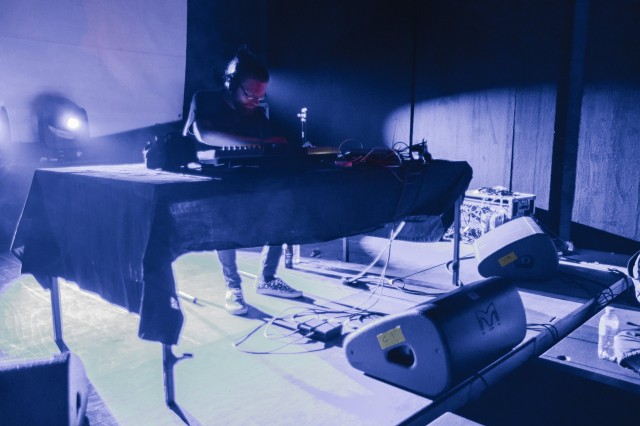There was a time when “live” or live PA meant “I’ve hauled a bunch of gear to this gig and made a mess of cables and I’m going to improvise live for you.”
Now, too often, it means “I’m going to DJ with Ableton Live instead of Traktor or CDJs.”
Don’t get me wrong. It’s not so much about a laptop or hardware. But there is a spectrum – a useful spectrum, applicable to different artists at different times. And if you really want “live,” you want an artist who constructs music before your eyes out of building blocks. Electronic music across genres often strays from traditional instrumental performance. The very nature of the technology means you’re often not playing every note. But you can make the process of assembly a performance, and something that involves audience participation, and surprise.
You can do this with a laptop and controllers; you can do it with hardware. You can do it with a combination.
Here’s what’s a bit strange: some of the people who are absolutely mastering this aren’t getting a fraction of the attention they deserve.
Watching Phelios is a real pleasure. Keep this video on; it has a reasonably slow build-up, but in the end, you watch an album-sized live set evolve beautifully before you. This is a live set you can enjoy in your living room as well as on the dance floor. (Photo, top: Schlagstrom Festival, Betriebsbahnhof Schöneweide, (CC-BY) Carsten Stiller.)
And he’s clearly at home with his ensemble:
ELEKTRON Analog Four, Octatrack, Machinedrum
ROLAND AIRA TR-8
I love watching this sort of thing. Octatracks can sometimes turn into track-queuing machines in the same way that some Ableton Live sets can – and, really, there’s nothing wrong with that. But by putting things beneath his fingertips, Phelios is clearly able to helm the shape and evolution of his set, and add a healthy amount of live tweaking. The stately pace of this direction fits these machines perfectly.
The Roland AIRA also shines alongside the more tested Elektron boxes. The TR-8 is dead-simple, but that’s a good thing. It keeps all its sound elements directly at the ready – no menus in site.
This also opens up a sense of shape that a bunch of triggered tracks would lack. There’s extensive variety, but there aren’t clear seams as he moves from one idea to another; everything is nicely interwoven.
For his part, Phelios is a project hailing from Wuppertal, Germany – dark, moody, dubby. He’s unsigned, but releases have shown up on Malignant Records, Eternal Soul Records, and Loki Foundation (they tend away from this sort of dance music, but have a similar sense of shadowy timbre).
I’ll say this, too: this sort of control and restraint is what is often missing in recorded and composed music, outside the live and improvised context. (I’m speaking partly in criticism of myself at times, not just the unwashed masses.) The problem with getting into editing, or composing with pencil and paper, for that matter, is that you can lose the sense of time scale. It’s like doing stop-motion animation without knowing how fast the movements will be when played back.
But for me, it’s thoroughly enjoyable watching Martin’s sense of time. It has wound up being a nice introduction to his music. And it’s a good example of how to record a live set. Thanks for the lesson, Martin. I’ll be listening to more.
https://www.facebook.com/Pheliosambient
More music for you – a number of albums out on Bandcamp, loads of stuff on SoundCloud.
And if you’re not into the techno thing, this gets a bit darker. Okay, a whole lot darker and more ambient – like a group of druid vampires hauled you off to their dungeon, and chained you there, and then it started to rain really hard, and then a bunch of bats showed up and wept. In a good way.
